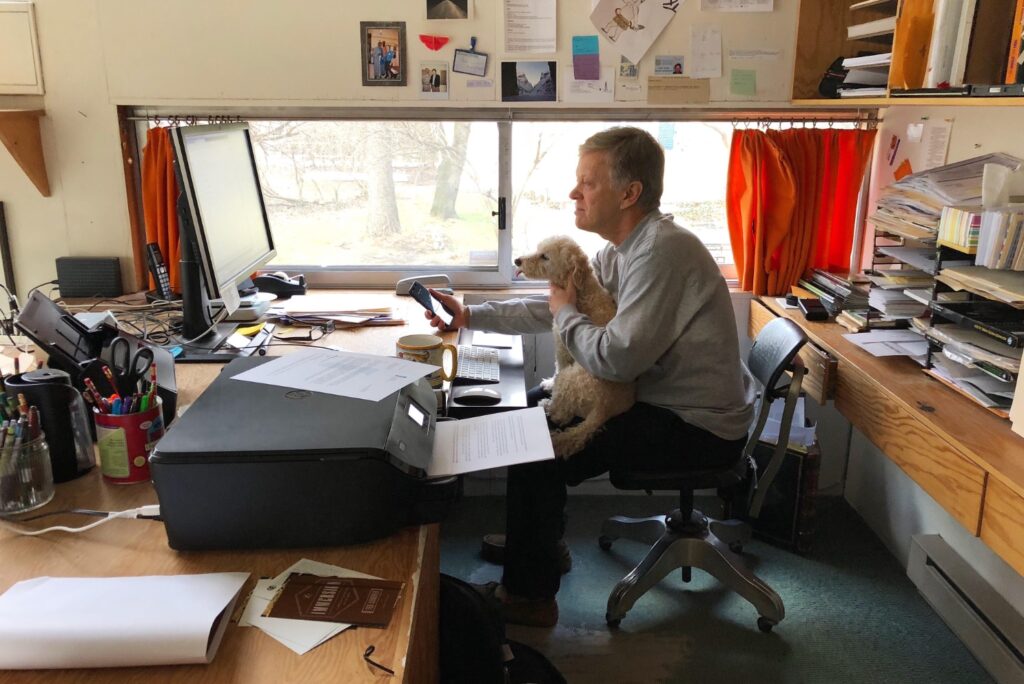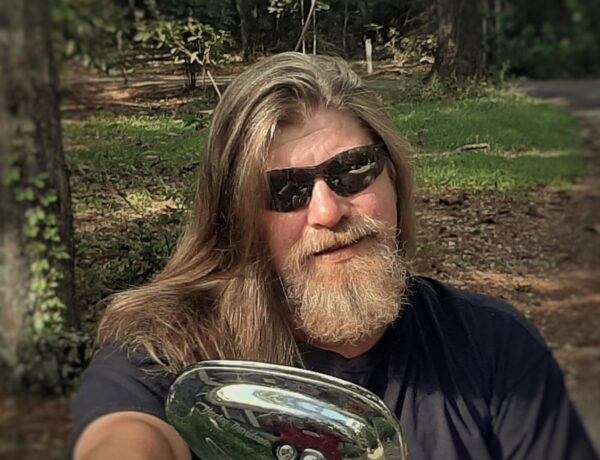Ted Conover is an author and journalist who has been called a “master of immersion” and “master of experience-based narrative nonfiction.”
A graduate of Amherst College and a former Marshall Scholar, he is also a professor and past director of the Arthur L. Carter Journalism Institute of New York University. He teaches graduate courses in the New York University Literary Reportage concentration, as well as undergraduate courses on the “journalism of empathy” and undercover reporting.
Ted is best-known for his immersive style of journalism, which has taken him to places like Sing Sing prison, the Mexican-American border, and the world of freight train hoppers. His books include Newjack: Guarding Sing Sing, Coyotes: A Journey Across Borders with America’s Mexican Migrants, and The Routes of Man: Travels in the Paved World.
Each week, we publish a new daily writing routine from a famous author. Subscribe to our newsletter so you don’t miss out!
Hi Ted, thank so much for joining us today. For those who may not know, can you please tell us a little bit about yourself?
I’m a nonfiction writer best known for immersing myself into little-known social worlds. My best-known book is Newjack: Guarding Sing Sing, which I researched by becoming a corrections officer for nearly a year. My very first book, researched as an anthropology thesis, was about riding freight trains with railroad hobos.
Other projects have involved work and travel with Mexican migrants, as a cab driver in Aspen, Colorado, and as a USDA meat inspector in Nebraska. I also teach writing as a professor of journalism at New York University.
I read your interview with Robert Boynton for his book, The New New Journalism, where you spoke about your time as a corrections officer, and it was absolutely fascinating. Did you experience any unforgettable moments during that time?
My prison work left indelible memories, not all of them good. Sing Sing is full of spooky, soul-crushing spaces—and a huge variety of energetic, penned-in humanity. As I wrote in Newjack, “Sing Sing was a world of adrenaline and aggression to us new officers. It was an experience of living with fear–fear of inmates, as individuals and as a mob, and fear of our own capacity to fuck up.”
Your book, Cheap Land Colorado: Off-Gridders at America’s Edge, is coming out in November this year. Can you take us behind the creative process for this book?
The political rise of Donald Trump surprised me and made me think that I needed to spend time outside of New York City—and away from cities, period. I grew up in Colorado, and was intrigued when I heard about a rural group that was doing outreach to keep people who live off-grid from becoming homeless when the weather gets cold.
I ended up becoming a volunteer for this group, and wrote about that in Harper’s Magazine. But I didn’t feel I was finished—I really liked many of the people I had met, and ended up buying my own five acres off-grid near them. This is on the high prairie of the sparsely-populated San Luis Valley.

What does a typical writing day look like for you?
My writing projects tend to have two distinct phases: first comes research, which provides the raw material for writing, and then comes the writing itself. In my case the research is often experiential—I put myself out there to see what happens. I take lots of notes. And then I return home and sit down to find the story in all of that.
I think that my typical day of writing actually starts the night before. I’ll walk the dog and then I’ll lie for a while with the lights out, thinking a bit about where I am in my story. (I try never to fall asleep to the TV, because that takes up some of the subconscious space that I think my writing depends on.)
The next morning I’ll eat breakfast, pour myself a cup of coffee, and head into my office—I usually write in the morning, while my wife is still asleep. If I’m working on the first draft of a book I often set a daily goal—maybe 800 words. I might answer a couple of emails to get my mind working but then I jump in. Writing is still hard for me, but it gets easier if I stick to a routine and do some every day, even on weekends.
I’m curious to know whether you have any must-have writing tools?
When I was younger I often played music—music without words—when I sat down to write. Once I got going I would no longer hear it. Back then I also wrote in the late afternoon and evening. Now, neither is true.
Whenever you hit a roadblock during a writing session, what are some of the methods you use to get back into the flow of things?
Do you know the toy cars that roll across the floor until they hit a wall, then reverse, then set forth again in a new direction? I think that’s the best metaphor for how I handle roadblocks. I pause and then try a new direction. Sometimes it takes several tries.
What does your writing workspace look like?
It’s just cluttered enough. Sometimes there’s a small dog in it.

Before you go…
Each week, we spend hours upon hours researching and writing about famous authors and their daily writing routines. It’s a lot of work, but we do it out of our love for books and learning about these authors’ creative process, and we certainly don’t expect anything in return. However, if you’re enjoying these profiles each week, and would like to send something our way, feel free to buy us a coffee!



No Comments